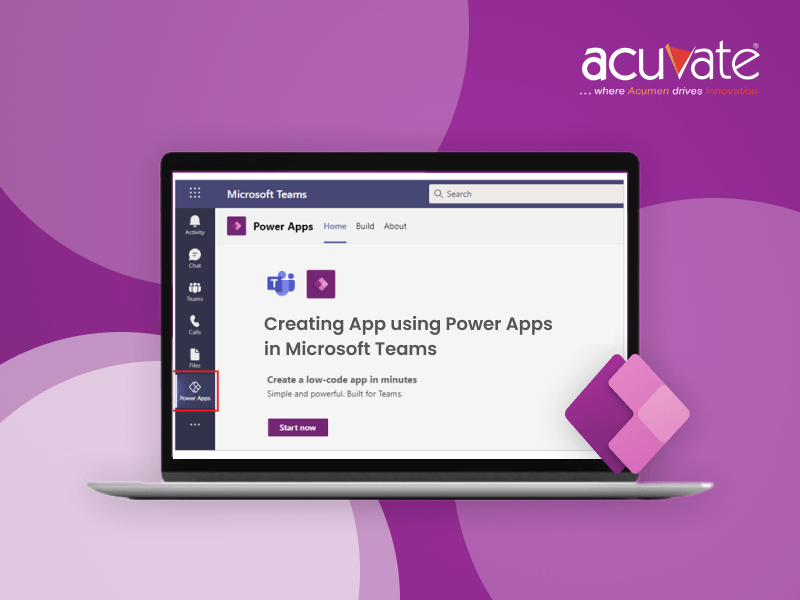As workplace demographics are transforming, employers struggle to match the evolving needs of a multi-generational workforce. New digital technologies have improved the way we analyze data, collaborate with employees, communicate and make decisions.
The rise of social networking, mobile, data and cloud technology has changed every aspect of our personal and business lives, making them more connected by the day. Most of these technologies undergo enhancements as better technologies arise leading to constant disruption. As more and more organizations evolve, innovation will continue to transform work culture and have a deep impact on today’s digital workplace environment.
However, adapting to the latest digital transformation trends in the workplace has always been a challenge for organizations across the globe. Business leaders are on a constant run to acclimatize to a sustainable digital practice i.e; to upgrade to latest or relevant business strategy; which would be a feasible solution in the long haul.
But keeping abreast of changes in the market and adopting newer trends that will produce favourable business outcomes is critical. In this blog, we’re going to preview digital workplace trends that are going to have the most impact on enterprises this year.
Digital Workplace Trend 1:
Progressive Employee Engagement
At this moment, the enterprise world is buzzing with new technological advancements influencing employee engagement and experience in the workplace. Modernizing your employee culture to match progressive work environments helps maximize productivity. Technologies associated with digital initiatives can have a transformational impact on employee experience impacting overall employee satisfaction.
If your employees are not actively adapting to available technologies which are in place as a part of your IT strategy, you might likely observe a dip in productivity.
Failing to provide employees with advanced technologies may cause them to become disassociated from strategic organizational initiatives.
Either of the situations may result in a break down of the planned IT initiatives.
Embrace the latest technologies in the workplace and encourage your employees to utilize these technologies according to their work accomplishments. For example, enabling your employees to leverage the latest trend of AI-powered chatbot to dig in information from your existing intranets/applications by taking advantage of conversational interfaces.
Take the time and make the investments needed to balance employee expectations with business needs to ensure they are equally satisfied and engaged.
Learn More: The Role of Chatbots in the Intranet
Digital Workplace Trend 2:
Increasingly Intelligent Applications
We expect to see an increasing number of organizations begin leveraging artificial intelligence in most of their business applications, in full force, to improve user experience or streamline existing business processes.
The initial step to deploy AI skill involves assessing the maturity and readiness of your business applications. Enterprise architecture and innovation leaders have to identify the use cases to realize the potential AI can bring in.
By 2022, it is expected that one in five workers engaged in mostly non-routine tasks will rely on AI to do their jobs – Gartner
Automate answering your repetitive mundane tasks with the help of AI-powered chatbots. Chatbots are designed to deliver a conversational user experience in the business applications with a minimum learning curve. Apart from automating responses, this trend can also help in addressing support outages, adoption issues and user satisfaction issues in a prominent way.
Learn More: The role of chatbots in intelligent enterprise automation
Digital Workplace Trend 3:
2019 Is the Beginning of the Gen Z Takeover
Millennials are more likely to use applications with advanced technologies and flexibility. Additionally, the new generation after millennials, Gen Z, are true digital natives and their preferences will dictate the future of a business’ success for years to come.
As a foundation step, every organization has to formulate a digital transformation strategy that can revolutionize traditional business models and work culture to match “digital everything” expectations of current and next generations.
Read More: Millennial Engagement in the workplace: 4 Actionable Tips
Digital Workplace Trend 4:
Voice-Driven Search
Voice search is expected to have a deep impact on digital workplaces.
With growing technologies like Amazon Echo and Google Home, we’re probably going to see significantly more searches carried out verbally in the digital workplace too.
According to Gartner, by 2021, early adopter brands that redesign their websites to support visual and voice search will increase digital commerce revenue by 30%.
Voice recognition technology would help improve customer service, make efficiency savings across the business, and deliver a more personalized, frictionless experience to customers and employees.
A virtual assistant topped up with a voice search optimization would be a trend in the years to come. Understanding this concept will go a long way in meeting your workplace goals efficiently.
Read More: Why Modern Intranets Are The Gateway for A Modern Workplace
Digital Workplace Trend 5:
Data Security Will Take Center Stage
Laws like GDPR are remodelling organization culture. Organizations are finding themselves uncertain about sharing their data on cloud-based platforms. Data security and data sensitivity are two principal considerations of business leaders while there arise many laws applied across data-driven industries and its prediction of accelerating through 2019.
Organizations are required to adopt platforms that allow employees to transact data securely. This is more applicable to their future needs as data security turns into a key enterprise consideration. IT leaders must enforce periodical checks on security policies to protect user privacy and comply with policy regulations.
Digital Workplace Trend 6:
Data Authenticity and Accuracy (KM)
Today, the authenticity of data and content is the currency that all organisations are trading to arrive at business conclusions. Use of unverified/untapped data is increasingly becoming a formidable concern.
With the explosion of content and data that the digital world has created, we’ve got more content than we know what to do with and we also often have trouble filtering required data from the pool.
A recent Accenture study revealed that four in five executives (79%) agree that organisations are basing their most critical systems and strategies on data, yet many haven’t invested in the capabilities to verify the truth within it.
If an organisation’s workplace analytic experts don’t validate the current data, it could be troublesome to manage business information going forward. Data verification is an integral part of all the trends we’ve mentioned and it is a wider part of the co-creation of solutions.
Eliminating duplicates, enabling better data discovery, illuminating dark data helps organizations in maintaining data sanctity and can help in arriving at accurate business decisions.
Read More: 6 Tips for Developing a Powerful Knowledge Management Strategy
Digital Workplace Trend 7:
More Decentralization in the Workplace
Today’s business structure can be broadly classified under centralized and decentralized.
In a centralized structure, decisions are usually taken by higher authorities who have control over the organization such as CEO, CTO, CIO etc. Typically, this structure is utilized by organizations with less than 200 employees. In a decentralized system, every employee in the organization has a voice in the innovative processes. Each department can come up with their respective directives for the future.
As businesses are required to undergo digital transformation and grow globally, organizations are left with no choice but to rapidly innovate. This can only be achievable in the present day scenario with decentralization. This structure boosts employee engagement as it instils a sense of ownership and facilitates competitive advantage by leveraging the power of innovation.
To sustain and thrive amidst intense competition, create intelligent business models, build top-notch technologies or products and maintain an effective innovation management system in the digital workplace.
Read More: 5 Benefits of Decentralized Innovation Management
Digital Workplace Trend 8:
Improve Digital Dexterity
Dexterity refers to a business strategy designed to encourage workforce agility and engagement by promoting employee autonomy and building a more consumerized work environment.
The goal of digital dexterity is to create a versatile, flexible workplace environment packed with a talented workforce that is invested in the success of the organization.
According to the Gartner survey, only 7% to 18% of organizations possess digital dexterity to adopt new ways of work (NWOW) solutions, such as virtual collaboration and mobile work.
A dextrous organization can quickly respond to market movements and disruptions. New businesses can be created with less struggle once your organizational departments and businesses are connected. Employees with common awareness of the business—and the technology supporting the business—can easily identify and exploit new revenue opportunities.
Conclusion
While these technology advancements promise to exceed expectations and improve employee efficiency, we may just observe a couple of trials and pilot extends in 2019.
Acuvate’s enables organizations to be future-ready by enhancing business capabilities and workplace excellence. We achieve this by building top-notch, digitally-modern and next-generation software and applications. Over the years, we’ve developed game-changing applications and helped several Fortune 500 organizations, SMBs and start-ups revolutionize the way they do business.
Some of our well-received solutions and services include:
- AI-Powered Enterprise Chatbot Platform – BotCore
- Next Generation AI-powered Intranet Solution – Mesh
- Idea Management Software – Wave
- AI-Powered Trade Promotion Optimization Software – Compass
And, so much more! Learn more about us and get in touch for a free consultation to discuss your digital workplace strategy for 2019.



